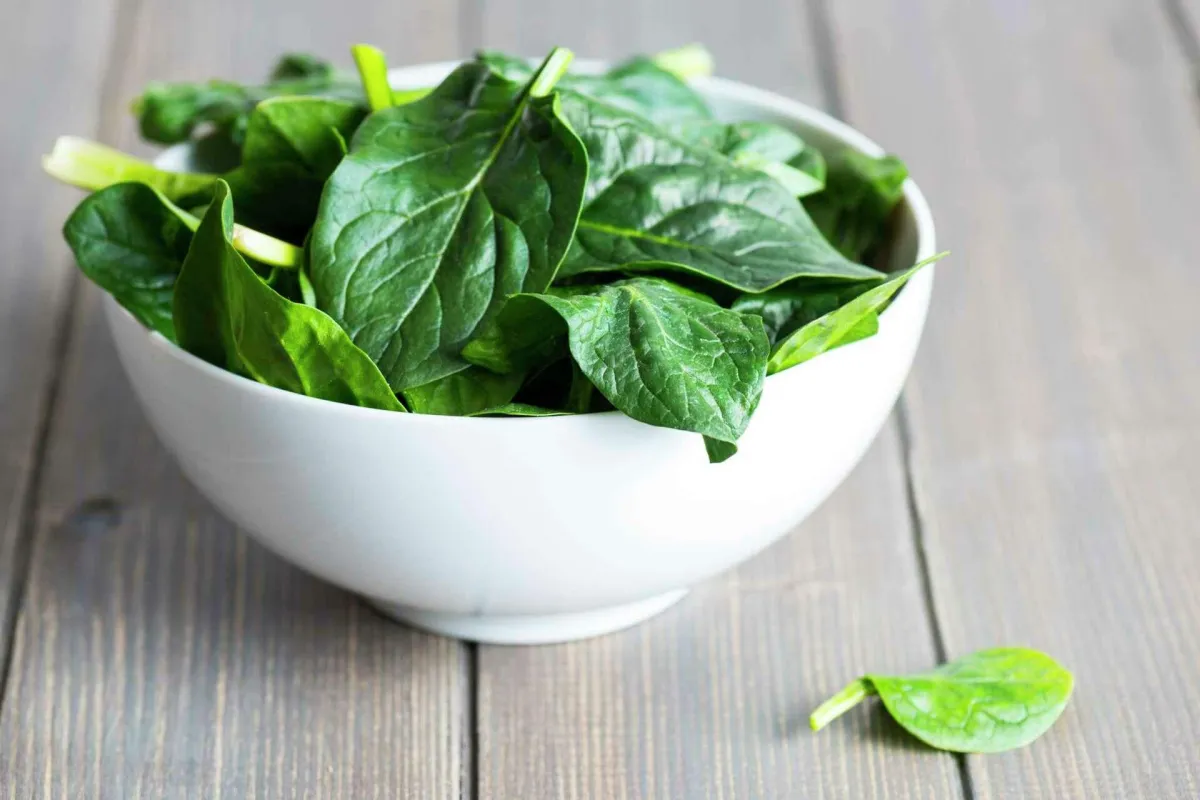BLOG

The Hidden Connection Between Oxalates & Candida: What You Need to Know
The Hidden Connection Between Oxalates and Candida: What You Need to Know
If you’ve been struggling with unexplained symptoms like joint pain, fatigue, brain fog, or digestive discomfort, the answer could lie in an overlooked connection: oxalates and Candida albicans. These two culprits can create a vicious cycle of inflammation, gut imbalance, and systemic health issues. Let’s explore how they interact and, most importantly, how you can break the cycle to reclaim your health.
What Are Oxalates?
Oxalates are naturally occurring compounds found in many plant-based foods like spinach, almonds, and sweet potatoes. They can also be produced within the body. While oxalates are harmless in small amounts, excessive levels can bind to minerals like calcium, forming crystals that contribute to kidney stones, oxidative stress, and inflammation.
What Is Candida?
Candida albicans is a yeast that naturally resides in your gut, mouth, and other areas. While it’s usually harmless, an overgrowth of Candida can wreak havoc on your body, causing symptoms such as:
Bloating and gas
Brain fog
Fatigue
Skin issues like rashes or acne
How Oxalates and Candida Are Linked
Here’s where things get interesting—and problematic:
1. Candida Produces Oxalates
Research has shown that Candida albicans can metabolize sugars into oxalates. If you have Candida overgrowth, you may also have higher oxalate levels, even if your dietary intake of oxalates is low.
2. Candida Impairs Oxalate Breakdown
A healthy gut microbiome contains oxalate-degrading bacteria, such as Oxalobacter formigenes, which help break down dietary oxalates. Candida overgrowth disrupts the gut microbiome, reducing the population of these beneficial bacteria and impairing your body’s ability to clear oxalates.
3. Oxalates Promote Candida Growth
High oxalate levels can damage gut tissues and weaken your immune system, creating an environment that encourages further Candida overgrowth.
This creates a cycle where Candida produces oxalates, oxalates damage your gut, and your gut’s inability to clear oxalates worsens Candida overgrowth.
Common Symptoms of Oxalate and Candida Overload
Digestive issues: bloating, diarrhea, or constipation
Joint pain or stiffness
Chronic fatigue
Brain fog
Vulvar pain or urinary symptoms
Recurrent infections
Breaking the Cycle: Dietary Strategies
1. Reduce High-Oxalate Foods Gradually
Suddenly eliminating oxalates can overwhelm your body, so start by gradually reducing foods like:
Spinach
Almonds
Beets
Sweet potatoes
Dark chocolate
Low-Oxalate Food Options
Instead, focus on:
Bok choy, arugula, dandelion, and other low-oxalate greens
Zucchini and cucumbers (peeled and seeded would be best on order to avoid lectins - another source of inflammation)
Grass-fed and grass-finished meats and wild-caught fish
Coconut products
Herbs like parsley, oregano, thyme, rosemary and sage
2. Follow an Anti-Candida Diet
Candida thrives on sugar and refined carbs, so eliminate:
Sugary foods and beverages
White bread, pasta, and pastries
Alcohol
Instead, focus on:
Non-starchy vegetables (e.g., broccoli, cauliflower, asparagus)
Healthy fats (e.g., avocado, olives, olive oil, coconut oil)
Clean proteins (e.g., pastured poultry and eggs, grass-fed beef and lamb, and wild-caught fish)
Low-glycemic fruits like blueberries and Granny-Smith apples
Supplement Recommendations
1. Oxalate-Binding Support
Calcium Citrate: Helps bind oxalates in the gut to prevent absorption. Take with meals containing oxalates.
2. Gut Health Support
Probiotics: Include strains like Saccharomyces boulardii to combat Candida and replenish beneficial bacteria.
L-glutamine: Supports gut lining repair.
3. Detox and Drainage Support
Magnesium glycinate: Helps improve detox pathways.
Activated charcoal or bentonite clay: Binds toxins for elimination.
Antifungals: Caprylic acid, berberine, and oregano oil can help combat Candida directly.
Reassessing Your Progress: The Role of Urine Testing
How can you know if your efforts are working? Functional lab testing is key. Urine Organic Acid Testing can measure:
Candida metabolites like Arabinose, indicating yeast overgrowth.
Oxalate levels, showing whether your dietary and supplement changes are lowering the burden on your body.
These tests provide actionable insights, helping you fine-tune your protocol and track your improvements.
Final Thoughts
The connection between oxalates and Candida is a critical yet often overlooked factor in chronic health issues. By addressing both simultaneously through targeted diet, supplements, and testing, you can break the cycle and promote lasting wellness.
Your body is designed to heal when given the right tools. Let’s empower it to do just that!

The Hidden Connection Between Oxalates & Candida: What You Need to Know
The Hidden Connection Between Oxalates and Candida: What You Need to Know
If you’ve been struggling with unexplained symptoms like joint pain, fatigue, brain fog, or digestive discomfort, the answer could lie in an overlooked connection: oxalates and Candida albicans. These two culprits can create a vicious cycle of inflammation, gut imbalance, and systemic health issues. Let’s explore how they interact and, most importantly, how you can break the cycle to reclaim your health.
What Are Oxalates?
Oxalates are naturally occurring compounds found in many plant-based foods like spinach, almonds, and sweet potatoes. They can also be produced within the body. While oxalates are harmless in small amounts, excessive levels can bind to minerals like calcium, forming crystals that contribute to kidney stones, oxidative stress, and inflammation.
What Is Candida?
Candida albicans is a yeast that naturally resides in your gut, mouth, and other areas. While it’s usually harmless, an overgrowth of Candida can wreak havoc on your body, causing symptoms such as:
Bloating and gas
Brain fog
Fatigue
Skin issues like rashes or acne
How Oxalates and Candida Are Linked
Here’s where things get interesting—and problematic:
1. Candida Produces Oxalates
Research has shown that Candida albicans can metabolize sugars into oxalates. If you have Candida overgrowth, you may also have higher oxalate levels, even if your dietary intake of oxalates is low.
2. Candida Impairs Oxalate Breakdown
A healthy gut microbiome contains oxalate-degrading bacteria, such as Oxalobacter formigenes, which help break down dietary oxalates. Candida overgrowth disrupts the gut microbiome, reducing the population of these beneficial bacteria and impairing your body’s ability to clear oxalates.
3. Oxalates Promote Candida Growth
High oxalate levels can damage gut tissues and weaken your immune system, creating an environment that encourages further Candida overgrowth.
This creates a cycle where Candida produces oxalates, oxalates damage your gut, and your gut’s inability to clear oxalates worsens Candida overgrowth.
Common Symptoms of Oxalate and Candida Overload
Digestive issues: bloating, diarrhea, or constipation
Joint pain or stiffness
Chronic fatigue
Brain fog
Vulvar pain or urinary symptoms
Recurrent infections
Breaking the Cycle: Dietary Strategies
1. Reduce High-Oxalate Foods Gradually
Suddenly eliminating oxalates can overwhelm your body, so start by gradually reducing foods like:
Spinach
Almonds
Beets
Sweet potatoes
Dark chocolate
Low-Oxalate Food Options
Instead, focus on:
Bok choy, arugula, dandelion, and other low-oxalate greens
Zucchini and cucumbers (peeled and seeded would be best on order to avoid lectins - another source of inflammation)
Grass-fed and grass-finished meats and wild-caught fish
Coconut products
Herbs like parsley, oregano, thyme, rosemary and sage
2. Follow an Anti-Candida Diet
Candida thrives on sugar and refined carbs, so eliminate:
Sugary foods and beverages
White bread, pasta, and pastries
Alcohol
Instead, focus on:
Non-starchy vegetables (e.g., broccoli, cauliflower, asparagus)
Healthy fats (e.g., avocado, olives, olive oil, coconut oil)
Clean proteins (e.g., pastured poultry and eggs, grass-fed beef and lamb, and wild-caught fish)
Low-glycemic fruits like blueberries and Granny-Smith apples
Supplement Recommendations
1. Oxalate-Binding Support
Calcium Citrate: Helps bind oxalates in the gut to prevent absorption. Take with meals containing oxalates.
2. Gut Health Support
Probiotics: Include strains like Saccharomyces boulardii to combat Candida and replenish beneficial bacteria.
L-glutamine: Supports gut lining repair.
3. Detox and Drainage Support
Magnesium glycinate: Helps improve detox pathways.
Activated charcoal or bentonite clay: Binds toxins for elimination.
Antifungals: Caprylic acid, berberine, and oregano oil can help combat Candida directly.
Reassessing Your Progress: The Role of Urine Testing
How can you know if your efforts are working? Functional lab testing is key. Urine Organic Acid Testing can measure:
Candida metabolites like Arabinose, indicating yeast overgrowth.
Oxalate levels, showing whether your dietary and supplement changes are lowering the burden on your body.
These tests provide actionable insights, helping you fine-tune your protocol and track your improvements.
Final Thoughts
The connection between oxalates and Candida is a critical yet often overlooked factor in chronic health issues. By addressing both simultaneously through targeted diet, supplements, and testing, you can break the cycle and promote lasting wellness.
Your body is designed to heal when given the right tools. Let’s empower it to do just that!

